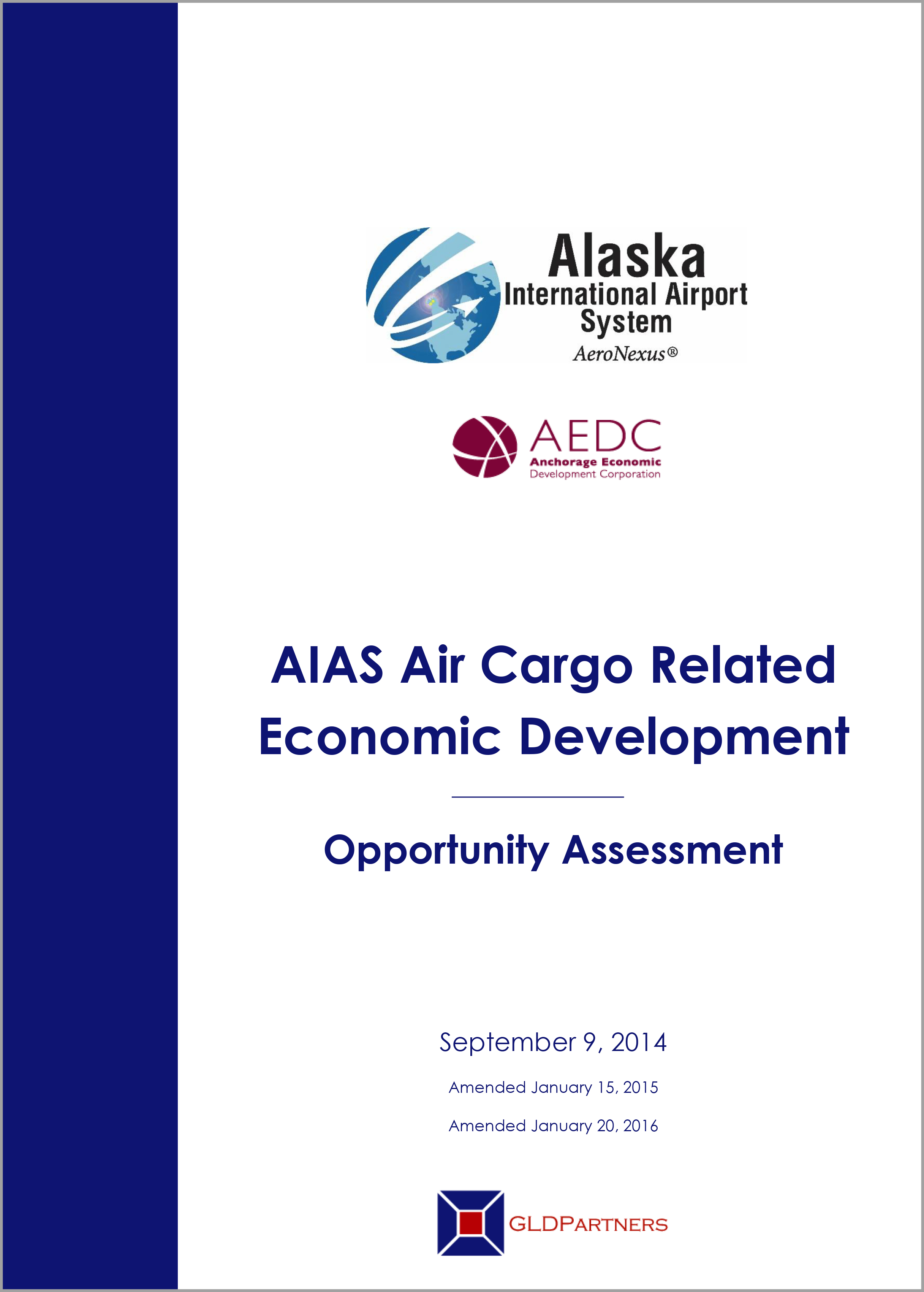Research & Reports
AIAS Air Cargo Economic Development Opportunities
The State of Alaska has a robust international trade environment. Serviced mainly by both sea and air modes of transportation, the 2012 dollar value of imports destined for Alaska was $2.1 billion and native Alaskan exports were $4.5 billion. The largest export category is fish and other marine products followed by natural resource products.
In Alaska for marine transportation, the Aleutian Islands are a major transit for the Great Circle Route linking commerce from the US west coast to southern Asia. Shipping is also expanding through the Bering Strait, a 53-mile wide chokepoint that links both the Northern (Russia) and Northwest (Canada) passages to northern Asian, Russian, and European commerce. For air transportation the Ted Stevens Anchorage International Airport (ANC) is ranked second in the US for landed weight of cargo aircraft, and sixth in the world for cargo traffic (Airports Council International).
ANC holds a unique position among international air gateways in the United States. In 1996, the US Department of Transportation began to permit air carriers from foreign countries (except those from the United Kingdom and Japan) to conduct expanded cargo activities at ANC. These activities included cargo transfer from a foreign carrier’s aircraft to any of its other aircraft, transfer from a foreign carrier to any US air carrier, and transfer from one foreign carrier to any other foreign carrier without being considered to have broken its international journey. In 2004 domestic and foreign carriers were afforded more flexibility and the outbound-US operations through ANC were afforded increased liberalization for the first time. ANC and Fairbanks International Airport (FAI) are the only two airports in the United States to have been granted these liberal air cargo transfer capabilities.

